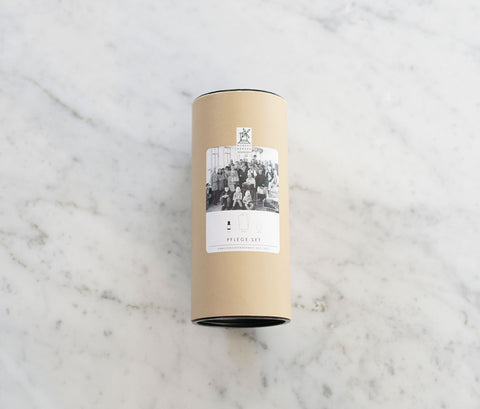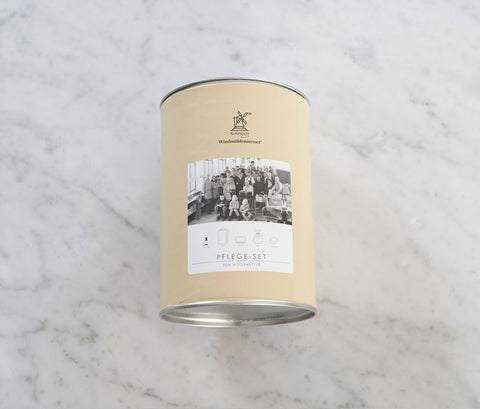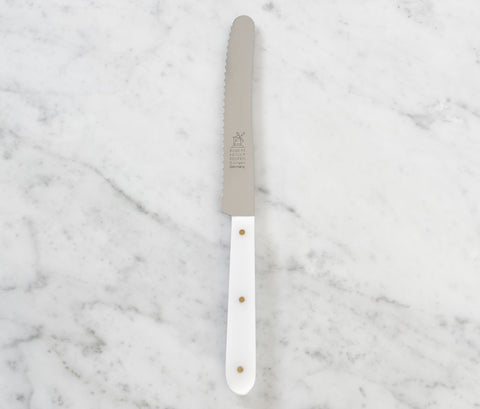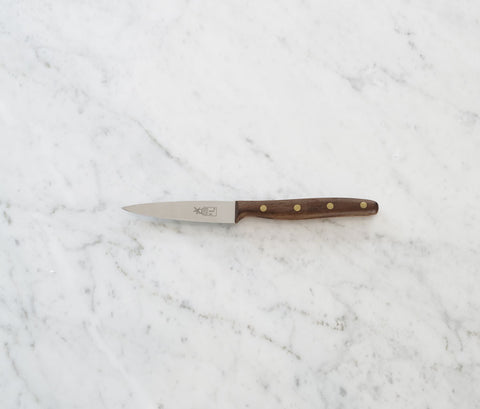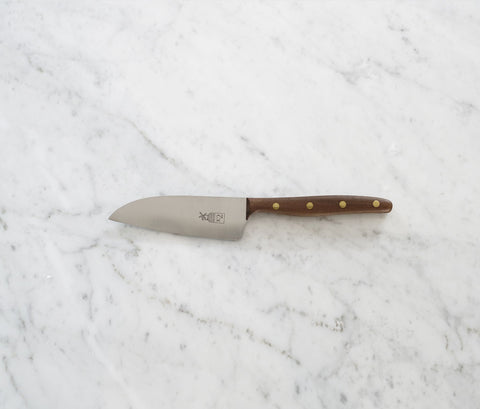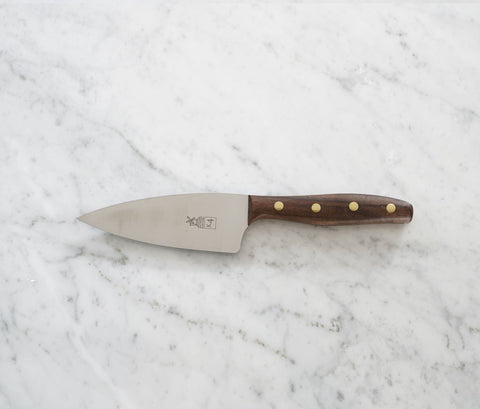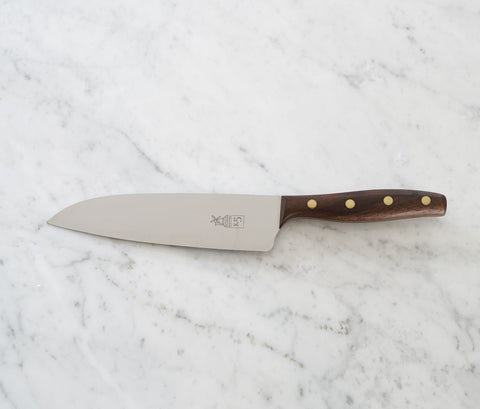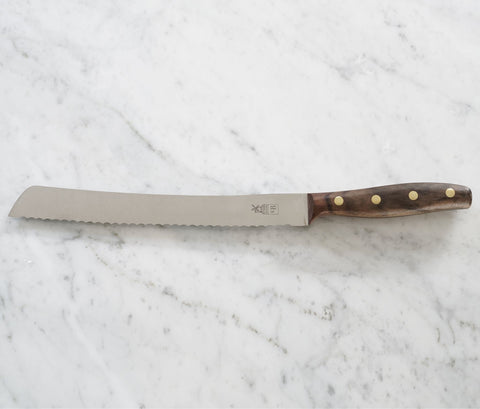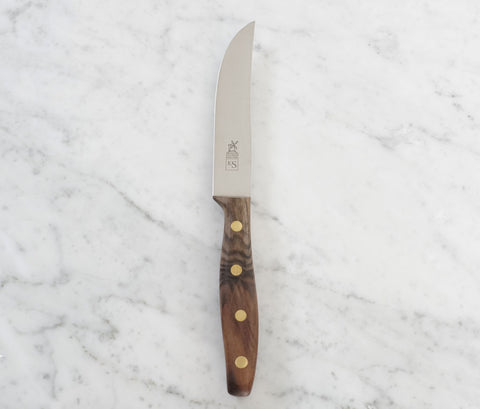
When making high quality knives the work of skilled craftsmen is indispensable for many of the processes. Machines do not come close to the precision and experience needed to craft a good knife. The Windmühlen Messer Manufactur has a long tradition of producing high quality knives since it was founded in 1872. At the work shop in Solingen Germany, it is actively developing and training young talent trough vocational training programs to master traditional professions of the Schleifer, Pließter, Reider and Ausmacher, each focusing on a specific area of the knife production process.

'Nieten, Hammer and Buckels'
Unlike most modern knife manufacturers today, Windmühlen Messer are still made using the traditional 'Solinger Dünnschliff'. The result is a blade that has a larger sharpening angle than mass-produced knives and is thinner providing improved and prolonged sharpness.

'Solinger Dünnschliff'
In addition, a 'Kesselscher Walkschliff' is applied to the spine of the blade. This technique enhances the stability of the blade but requires considerable experience from the craftsman and is rarely used these days.

'Kesselscher Walkschliff'
Pließten means "fine grinding". The blade is polished on rotating leather and felt washers. This removes any visible marks from the sharpening process. The surface becomes finer and smoother and this in turn has a positive effect on cutting quality and edge retention. In addition, small irregularities are corrected and the blade is made slightly narrower.

'Blaupließten'
'Pließten' is carried out in different stages, 'Feinpließten' and 'Blaupliessten'. These techniques are among the most intricate of the sharpening processes applied at the Windmühlen Messer Manufactur. Finished blades have a bluish to rainbow-colored sheen. When there was no stainless steel, the 'Blaupliessten' was used to smooth the surface of the blade make them less sensitive to rust and discoloration. With stainless steel the main advantage is increased sharpness and cutting qualities of the blade.
'Reiden' refers to the assembly of blade and handle. The end-piece of the blade, called 'Erl', is joined with the wooden handle using metal studs. A skilled craftsman is needed to handle the hammer and prevent damage to the wood.
 'Reiden' - The Assembly of the Knife
'Reiden' - The Assembly of the Knife
On a coarse abrasive belt the wood of the handle is shaped. Finer coarse belts are used to further perfect the handle. Adherence to grip shape and symmetry are very important.
 'Ausmachen'- Shaping of the Handle
'Ausmachen'- Shaping of the Handle
'Schuren' refers to the handle being processed on a cotton disc with a special natural paste. The fine wood pores are closed and the handle gets a matt and smooth texture.
 'Schuren'- Polishing of the Handle
'Schuren'- Polishing of the Handle
A total of 70 work-processes are needed to manufacture each knife. The result is a true piece of craftsmanship: functional, durable and beautifully finished.
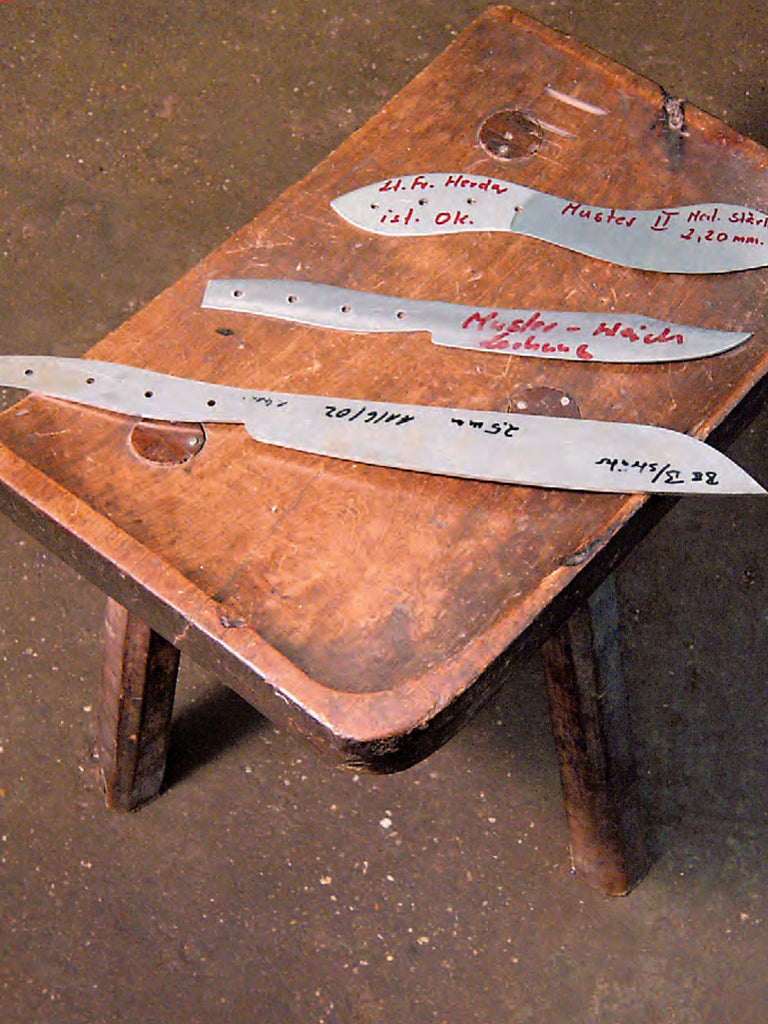
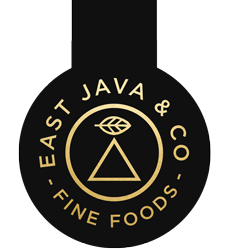



 'Reiden' - The Assembly of the Knife
'Reiden' - The Assembly of the Knife 'Ausmachen'- Shaping of the Handle
'Ausmachen'- Shaping of the Handle 'Schuren'- Polishing of the Handle
'Schuren'- Polishing of the Handle